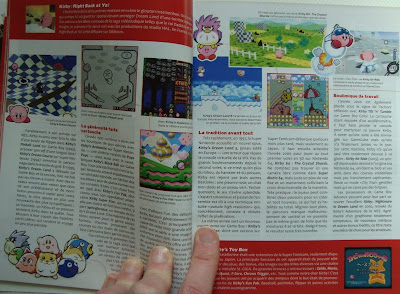
Excuse the late nature of this entry, it took a while getting the issue over from the US, and when I did get my camera was on hiatus for three weeks (the French mag entry was photographed a few weeks before I put it up). Still, now my camera is back and regular posting of photos can commend.
.
.
.
Although its release has been sporadic, the new GF issue did make it to stores. This is the year in review issue and as always it looks damn fine. It’s always good to see a magazine with a regular artist on board, as showcased by Rob Duenas’ original Splatterhouse painting.
 Because I’ve taken so long to write about this most of the content isn’t up-to-date, but you can see the reviewed games on the Viewpoint page.
Because I’ve taken so long to write about this most of the content isn’t up-to-date, but you can see the reviewed games on the Viewpoint page.
My favourite thing this issue was the massive Retro City Rampage interview, since the game continues to look better and better.
 Gotta love the Donkey Kong coverage too – I wasn’t so interested in the game before, but the ensuing pages help generate excitement for the game.
Gotta love the Donkey Kong coverage too – I wasn’t so interested in the game before, but the ensuing pages help generate excitement for the game.
 Their year-in-review awards list is interesting, since I’ve been comparing them across various websites and magazines. Considering how many awards Red Dead and Mass Effect have been getting, from everyone across the world, perhaps I should finally take the plunge and try one (probably Mass Effect 2, because some people have compared it to Star Control 2).
Their year-in-review awards list is interesting, since I’ve been comparing them across various websites and magazines. Considering how many awards Red Dead and Mass Effect have been getting, from everyone across the world, perhaps I should finally take the plunge and try one (probably Mass Effect 2, because some people have compared it to Star Control 2). My only criticism? No mention of Deadly Premonition anywhere in the list. That was my 2010 GOTY.
My only criticism? No mention of Deadly Premonition anywhere in the list. That was my 2010 GOTY.













































